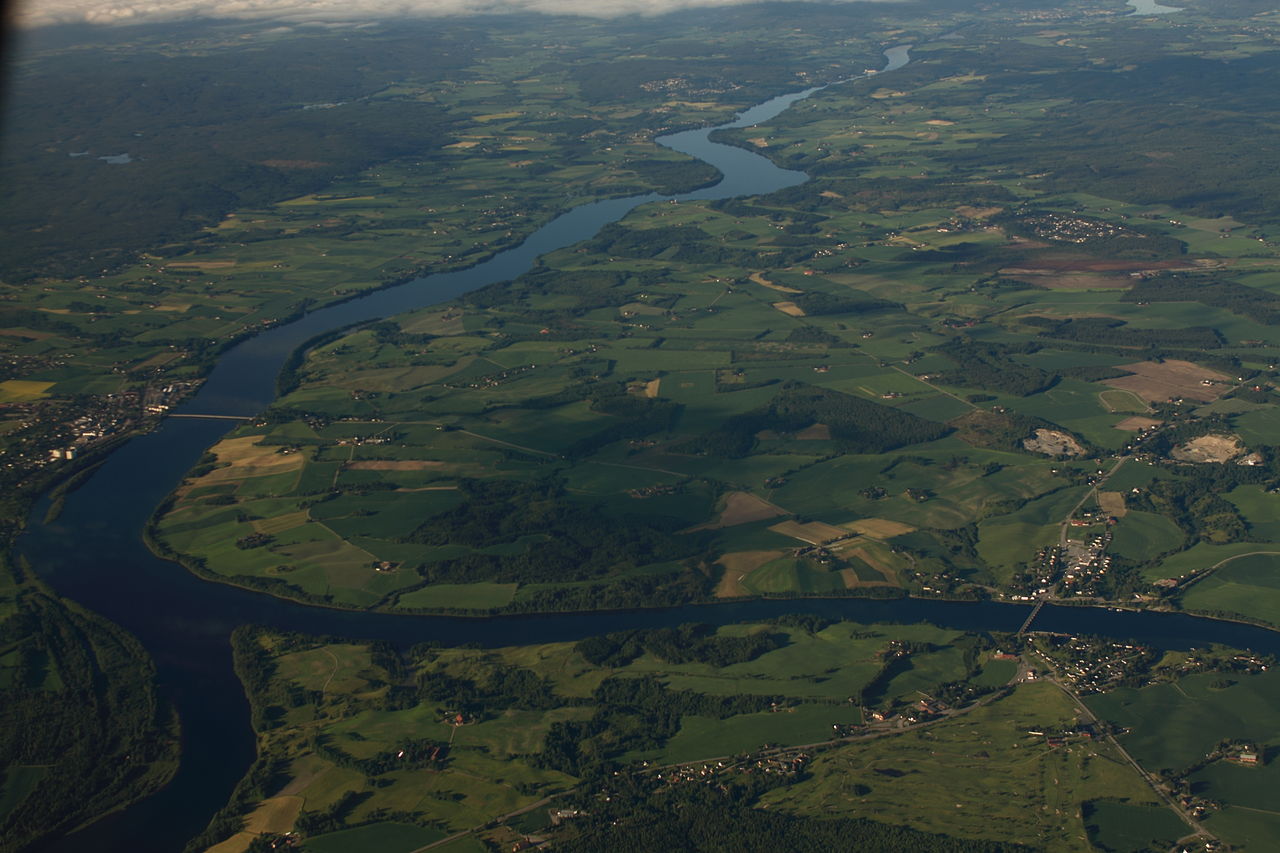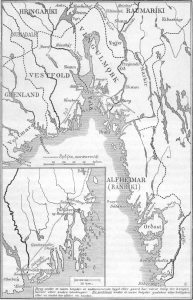For your guidance, I have included a glossary and pronunciation guide to assist with some basic words found in The Seidr Cycle.
The audio track appears BELOW the word I am pronouncing.
“SEE SPOILER” appears next to some of the words provided, while others have no description at all. A description of these words contain spoilers and are therefore, not shown on this page. As the series progresses, a hyperlink will be added allowing readers to view the additional notes on a separate post without revealing spoilers to others who have just started the series. More of these notes will be appearing as more books in the series are released.
Pronunciation Guide
Please note, the places and people who are historically accurate have a hyperlink attached to the corresponding article I used for research.
A
Aesir (A-sear) The Norse gods of Asgard known as Odinn, Thor, and Frigg.
Aeslo (A-slo) Oslo, Norway
Agdir (AG-deer) Old Norse for the Ancient petty Kingdom of Norway
Alfr (Alf) Elf and/or river
Note: The word “alf” originally meant “river.” The word soon became interchangeable with the folk who lived there. “Alf” then could mean “river” or “river folk.” Alfheim (the region) literally translated to “home of rivers” or “land of rivers” and actually refers to the area between Sweden and Norway. Yes. Alfheim does exist. It was believed that these river folk had such striking beauty being tall with blond hair and blue eyes, that later they would become the aryan race we know of today. That’s right! The aryan race are elves.
Alfar (AL-far) Elves
Alfheim (ALF-hame) Elf Home or “Land of Rivers”
Astramonath (A-stra-MO-noth) Old Norse/Anglo-saxon for “East Month.” Not really. There is a long linguistic history to this word that requires a full article, which you can read here. Simplified, it is the pagan holiday once held on the Spring Solstice prior to the introduction of Easter. Read more…
Aursund (AIR-soon-d) Lake Aursund in Norway. This is one of the few words without a known start date. This word is still used today in reference to the lake that feeds the Glomma River.
B
Bean Si (BAN-she) Old Irish for the myth, the often Anglicized “Banshee.” Further reading is here.
Bergen Tryggveson (BARE-gen TREEG-vay-son) The pompous, over-bearing Nord Lord. Ljosalfar and a berserk known as “The Dark One.” (See track below)
C
Caoilinn (KWAY-linn) Ljosalfar SEE SPOILER
D
Daggon (DAY-gon) Dokkalfar
Dalr (Dall like Call) Old Norse for dell. Swann Dalr literally means “Swann’s Dell.”
Dokkalfr (DO-kalf) Dark elf
Dokkalfar (DO-kal-far) Dark Elves (See track below)
Dofrarfjell (DO-frar-fee-yell) Dofrarfjell is the Old Norse word for Norway’s Dovrefjell. Dovre (Do-ver) is a Norwegian village once called Dofrar, and “fjell” is Norwegian for “mountain.” So literally, “mountains of Dofrar.” Further reading is available here.
Dubh Linn (DOOV-Linn) Dublin, Ireland (See track below)
Dvergar (D-VARE-gar) Plural. Simplified, they are cave elves. See “Regarding the Dvergar”
Dvergr (D-VARE-g) Singular (See track below)
E
Eilif (AY-leef) Dokkalfar
Eire’s Land (AIR’s Land) Ireland (See track below) Eire is one of my favorites from Celtic legend.
Regarding Eire
With her sisters, Banba and Fódla, Eire was part of an important triumvirate of goddesses. When the Milesians arrived from Galicia, each of the three sisters asked that her name be given to the country. This was granted to them, although Ériu (Éire) became the chief name in use. (Banba and Fódla are still sometimes used as poetic names for Ireland, much as Albion is used as a poetic name for Great Britain.) – From Wikipedia and http://celt.ucc.ie/index.html
Elding (EL-ding) A mysterious metal infused with the Seidr only used by certain clans of the Alfar
Elding (EL-ding) The age in which the Alfar reach full maturity and stop aging.
F
Fand (Fand) SEE SPOILER
Finn (Fin) The Old Norse word for the Sami
Finntent (FIN-tent) The Old Norse words for a portable teepee-styled tent still used by the Sami
Fjandinn (Fee-YAWN-din) The old Norse equivalent to the Christian word “Devil” used by Norsemen prior to the introduction of the Christian culture.
Freyja (FRAY-ya) Norse goddess
G
Gamme (GA-may) The Old Norse word for an earthen home still used by the Sami
Gardariki (Gard-ar-EE-kee) This is the Old Norse term used for the Kievan Rus
Gaulelfr (GAW-lel-f) The Old Norse name of the Gaula River in Norway.
Gautelfr (GAW-telf) The Old Norse name for the Swedish River, The Gota Alv.
Ginnungagap (Gi-NOON-ga-gap) The Great Gap (See track below)
Gjalrhorn (G-YALL-horn)
Gjallarhorn (G-YALL-ar-horn) Literally translates to “Holler Horn.” Our word “Holler” comes from “Gjallar” and sounds just like it. It would take centuries for the “Gj” to become “h.”
Gramm (Gram)
Gudrun (GOO-droon) Dokkalfar (See track below)
Gunir (Goo-NEER) The Ljosalfar city in Alfheim
H
Hel (Hel) Loptr/Loki’s daughter, Hel, guardian and overseer of Hel or Helheim. This is not a mispelling.
Helheim (HEL-hame) The Norse version of the Underworld where Loptr/Loki’s daughter, Hel, resides.
I
Idunn (EE-thoon or EE-doon) Norse goddess
J
Jotun (YO-toon) Giants
Jotunheim (YO-toon-hame) The home of the giants
K
Kallan Eyolfdottir (KA-lon AY-olf-do-teer) Dokkalfar (See track below) The accent falls on the “Ka” of Kallan.
Kára (KAR-uh) A Valkyrie. Further reading
Kaupangen (KAW-pan-gen) Old Norse for “Market place” also the name given to any and all trade towns.
Kattegat (COT-e-got) Literally, the Danish word for “Cat Gate.” Geographically, it is the span of water that separates Denmark from Norway and Sweden. Read more here.
I just want to say, after months of pouring over etymology and historical linguistics, I deduced that this word is so old, it has no record of its first use and very well may have been in use more than 1,000 years ago. It is still in use today. I mean, WOW! *word nerd* I felt confident using this modern name when I heard the History channel using it in their show “Vikings.”
Khvalis Sea – (K-VA-lis See) Old Russian for “Caspian Sea”
L
Lavanteinn (LA-van-tane) SEE SPOILER
Loptr (Lopt) The Old Norse name for Loki
Ljosalfr (Lee-YOS-alf) Light Elf
Ljosalfar (Lee-YOS-al-far) Light Elves (See track below)
Lorlenalin (Lor-LEN-a-lin) Dokkalfar city in Alfheim (See track below)
M
Midgard (MEED-gard) Literally translates to Middle-Earth. The human realm.
Mimir (ME-meer) Read more on Mimir’s Well here.
N
Naejttie (NIGH-yay) This word is Old Sami for “Shaman” Read more
Nid (NEED) The Nidelva River in Norway
Nidaros (NEE-dar-os or NEE-tha-ros) Trondheim, Norway
Nidingr (NEE-thing) Literally “Nothing.” The status of “outlaw” given to a dishonorable coward who has been stripped of his station, property, and citizenship in Norse culture. (See track below)
O
Odinn (OH-thin or OH-din) Norse god
Olaf Tryggvason (OH-lof TREEG-va-son) Historically, the first king of Norway.
Note: Olaf Tryggvason has no relation to Bergen or Rune whose last name is Tryggveson. The name of Olaf’s father was “Trygg” while the father of Rune and Bergen was “Tryggve.”
P
Prestr or priast (Prest or PREE-ast) Old Norse for Priest
R
Raumelfr (ROM-elf) The Old Norse name for Norway’s Glomma River.
Note: Raum is Old Norse for “Thunder” so the “Raumelfr” translates directly to “Thunder River.” Prior to any records, the land in that area was called “Romerike,” which literally means “Kingdom of Raum” or “Kingdom of Thunder.” There is some speculation that the ancient king of Norway was King Raum the Old and the region and river was once named after him, though his name means “Big and ugly.”
Rod Men (Rod Men) This is Old Norse for the Rus (Early Russians), who may or may not have been Norsemen. The “Rod” refers to the oars in which they sailed up the Volga River in Europe.
(At this point in the Glossary I asked myself, what in Odinn’s name was I thinking doing this research!? Jeepers!) It ties in to Bergen’s story, which has nothing to do with Dolor and Shadow… until Book #5.
S
Screen Passage (Screen passage) This is a faux wall commonly used in a throne rooms during the 10th and 11th century. It served as a back drop for the throne while hiding the doors to the servant’s quarters, cellars, and kitchens. Further Reading…
Seidhi (SEE-thee)
Seidr (SEED) The life source bound to the elements and all living things. Known as magic in the Middle East.
Seidkona (SEED-ko-na) Old Norse for “Witch” (See track below)
Sigyn (SEE-gin) Loptr/Loki’s wife
Svadilfari (SHVOD-ill-far-ee)
In Norse mythology, Svaðilfari (Old Norse “unlucky traveler”[1]) is a stallion that fathered the eight-legged horse Sleipnir with Loki (in the form of a mare). Svaðilfari was owned by the disguised and unnamed hrimthurs who built the walls of Asgard. – Wikipedia
In Tales of the Drui, this is Loki’s horse. And yes. If you are a Norse nerd and believe that I am suggesting that Loki, after taking on the likeness of a mare and siring Sleipnir with the stallion, Svaðilfari, then took the stallion as his own, then you are correct. That is exactly what I suggest.
Svartálfr (SVART-alf) Black Elf
Svartálfar (Svart-ALF-ar) Black Elves
Svartálfaheim (Svart-ALF-a-hame) Home of the Black Elves (See track below)
T
Tuatha De Danann (TWO-uh De Da-nan) The Tuatha De Danann is the legendary Irish gods as seen in “The Invasion of Ireland.” The term literally translates to “The Children of Danann” and refers to the entire race of gods as sired by Danann and Dag. It was the Tuatha de Danann who the goddess, Eire, pleaded to, asking that the island be named for her. Hence “Eire’s Land,” which was later anglicized to Ireland. The Tuatha de honored Eire’s request.
Thing (Thing) The Norwegian Parliament still in existence today in Norway.
Trionoide (Tree-NOY-duh or Tree-NOY-day) – Trinity
Tryggve (TREEG-vay) Ljosalfar
U
Uskit (OO-skit) Old Norse for shit
V
Vanir (VA-neer) The Norse gods that once opposed the Aesir. Freyr and Freyja.
Vestfold (VEST-fold) The region of Norway west of the Oslofjord
Viken (VEE-ken) (Pictured left) Old Norse for “Inlet” or “Creek” and refers to the region of Norway and Sweden that was the high seat of the ancient petty Kingdoms of Norway. “A-Viking” could mean “going up the creek.” Hence today’s term of “Viking.”
Vingulmork (VEEN-gool-mork) (See picture) A region of Viken
Volga (VOL-guh) Volga Trade Routes
W
Wicce (Witch) Anglo-Saxon word for “Witch”
I add words as I find them or as the requests come in. If there is a word you would like to see added, please email me with your request at angelabchrysler@gmail.com
And if this isn’t enough reading for you, here is the Tales of the Drui Index complete with hyperlinks!
Old Norse
For those of you who are fascinated with language…
English derived from a variety of languages used by early Germans. Before the Christian Church implemented the alphabet used by the Holy Roman Empire in the Middle Ages, Norsemen used their own writing system called “futhark” (they look like Tolkien’s Dwarven runes). As a result, there are several Nordic based sounds that we are still using today without proper representation.
Always pronounce the Norwegian “J” like “y” as in yo-yo. Some common examples often seen by English speakers are fjord (fee-yord), bjorn (bee-yorn), and Jarl (yarl). New York was named after York, England, which derived its name from the Viking capital, Jorvik (Yor-vik) established in the 9th century. There are no markings to indicate whether an English “J” or Norwegian “J” is used.
Keeping true to the original pronunciations, I have chosen to use one of the Old Norse letters: the “eth”. An eth, D or d, is pronounced like “v” sounding “th” in that, this, thee, or thus. The Anglo-Saxons adopted the sound and changed the “d” to the hard “th” sound we use today. To help differentiate between the soft “th” like “f” and the hard “th” like “v”, I have used the “d”.
Thus, Gudrun is “Goo-throon”, Seidr is “say-th”, Idunn is “Ee-thoon”, and Odinn is O-thinn. However, feel free to use either the modern English “d” sound or the hard “th” sound whenever you see the “D or d”.
The “thorn”, Þ or þ, bears the sound of the soft English “th” similar to an “f” as in “thing” “thin”, or “Thor”. Due to its resemblance to the English “P”, I have chosen not to use the thorn. Below is an example:
“The Jarl’s þegn, Þorn, prayed to Odinn at the Þing.”
Sounds like . . .
“The Yarl’s thane, Thorn, prayed to Othinn at the Thing.”
And, if you’re not confused enough over “eths” that look like “d’s” and “thorn’s” that look like “p’s”, Old Norse utilized an “r” in very much the same way that English speakers use the “s”. In most cases, an “r” at the end of a race or station represents singularity or plurality and is silent:
Example: Dvergr vs. Dvergar, Ljosalfr vs. Ljosalfar, drengr vs drengar, etc.
Skyrim gamers are familiar with the word “Draugr,” which is Old Norse for “Ghost” and is pronounced “drog.”
The Old Norse language also used “r”, “i”, and “ir” among other letters, at the end of a name. In these instances, the “r” is not being used to indicate singularity or plurality, but to indicate feminine and masculine form.
- Loptr, Bragi, Stallari.
Whether or not the “r” at the end of a word is pronounced is solely dependent on the Norwegian dialect spoken. For English speakers, feel free to pronounce the “r” or keep it silent. Me, personally, I like it silent (except when I am saying “Baldr”). Either way is acceptable.


